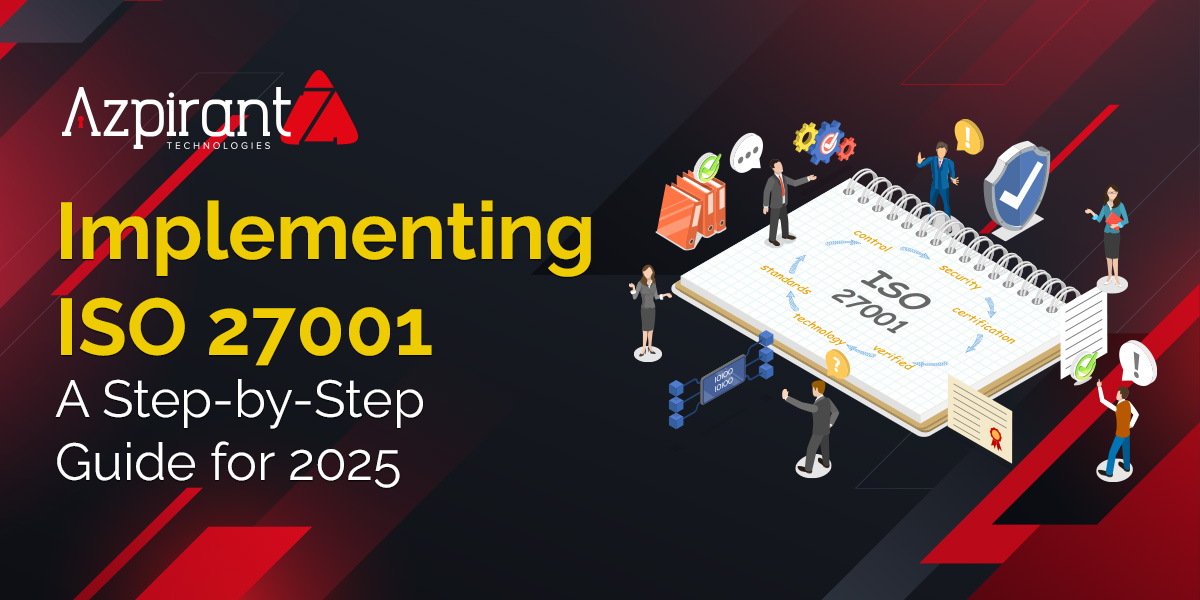We are living an era where cyberthreats are rapidly evolving and data breaches are increasing like never before. It is recommended that implementing a robust information security framework will make business imperative. This can be achieved from ISO/IEC 27001:2022, the internationally recognized standard for the Information Security Management Systems (ISMS), provides a comprehensive framework for protecting the confidential or sensitive information and ensures the compliance.

The organisations looking to strengthen their security posture in 2025, this article offers a clear approach for implementing iso 27001:2022 from the ground up.
Why ISO 27001 in 2025?
Today, we often more risks in the organizations supply chain like working with the third-party vendors and most of the companies are using cloud services to store their data. Because of all these latest evolving trends, the need for a structured approach to information security is more critical than never. ISO 27001 helps organizations:
- Identify, Evaluate, and Mitigate the information security risks.
- Meet legal, regulatory and contractual obligations.
- Enhance business continuity and resilience.
- Improves the trust among stakeholders and brand reputation.
Step-by-Step Guide to ISO 27001 Implementation:
1. Get Management Commitment: Before the implementation process begins, make sure the company’s top management fully supports the iso 27001 project. This includes understanding the benefits of the iso 27001, appointing a project manager and allocating sufficient resources. Without leadership support, the ISMS may lack direction.
2. Define the Scope and Objectives:
Establishing a clear scope by outlining what parts of the organization will be covered by the ISMS is very much required. This scope includes the business units, locations, systems. Also, the scope should properly align to the organizational gaols.
3. Conduct a Risk Assessment:
Risk assessment one of the most important parts of the iso 27001 sometimes also referred to as the heart of the iso 27001. This assessment includes identifying information assets, assessing the threats and vulnerabilities and eventually evaluating the impact and likelihood of incidents. Then as per the evaluation prioritize the risks based on your organization’s risk appetite.
4. Establish the Risk Treatment Plan:
Once the risks have been identified, now it’s time to decide how to handle them like should the organization accepts, avoid, transfer or mitigate. Defining the controls using the Annex A of iso 27001:2022 which includes total of 93 controls in 4 different categories which are Organizational, People, Physical, and Technological. And it’s not required to implement all of the controls, implement only those relevant to your organization’s risks.
5. Develop Required Documentation:
ISO 27001:2022 mandates several documents, including:
- Information security policy.
- Statement of applicability.
- Risk assessment and risk treatment.
- ISMS Scope
- Procedures for control.
6. Implement the controls:
This is the stage where the organization puts the security controls into the action. And these controls are based on the identified risks and selected from the Annex A of the iso 27001. Some of the famous controls includes Access control, Encryption, Incident Response, training and awareness sessions.
7. Training and awareness sessions:
Conducting regular training and awareness sessions to the employees in a periodic manner is one of the mandatory requirements of the iso 27001. And ISMS is only as effective as the people who operate within it, so conducting the awareness sessions is very much required.
8. Conduct management review:
Senior or top management should review the ISMS at least once a year just to ensure it remains aligned with organisation business goals and regulatory requirements. And this review should address the performance metrics, non-conformities and continual improvement.
9. Undergo certification audit:
Once the information security and management system (ISMS) is fully set up, then it’s time to engage a third-party certification body for an external audit.
This process typically involves:
- Stage 1 Audit: This the stage where the auditor checks your documents and review things like security policies, risk assessments.
- Stage 2 Audit: This stage involves a proper detailed assessment, where the auditor looks at how well your security controls are working in real time. They do the evaluation of the security controls of the iso 27001:2022 just to check how effective these controls are; if everything is in place and working well then the organisation will be certified as the iso 27001:2022.
Achieve ISO 27001 Success with Azpirantz
In an era of escalating cyber threats and stringent data protection, achieving ISO 27001 certification is more than compliance—it’s a strategic imperative. For organizations seeking to significantly enhance their information security posture through a globally recognized standard, Azpirantz offers tailored ISO 27001 implementation consulting services. We partner with you to develop and integrate an effective ISMS, addressing supply chain risks, cloud security, and other critical vulnerabilities, helping you transform security into a competitive advantage for 2025 and beyond.
*The content is released by Azpirantz Marketing Team.